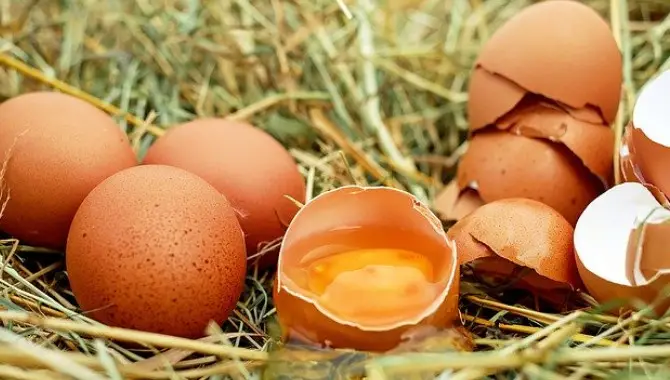When I first went vegan, I got a lot of odd questions from friends and family. One of my favorites was the aunt who asked me “Could you eat just the egg whites?” as if it was just a matter of cholesterol. The poultry and egg industry has a woeful record both in terms of its environmental impact and the welfare of its animals. It’s no surprise that more and more people are deciding to leave eggs off their shopping lists and look for kinder, healthier alternatives instead. Fortunately, there is an ever-growing number of delicious substitutes out there that will make you forget eggs altogether.
Are egg whites vegan? Egg whites are not vegan. An egg white is the albumen of a bird’s egg, usually a domesticated bird such as a chicken or duck. Because they’re an animal product, no part of an egg can ever be vegan. “Vegan egg whites” are made from plant-based ingredients and contain no egg.
You’ve arrived on this page because you have questions about egg whites and the vegan lifestyle in general.
- Are egg whites vegan?
- What about egg yolks?
- If eggs are non-vegan, what are “vegan egg whites”?
- What can you use instead of egg whites or whole eggs?
- Can you still bake cakes and meringues if you’re a vegan?
- Can vegans eat dressings such as mayonnaise or aioli?
- What about foods like omelets or scrambled eggs?
Luckily, you’ve come to the right place. We have all the answers you’re looking for. Keep reading to find out everything you want to know.
Read Also: Substitute for nutritional yeast
Are egg whites vegan?
Whatever your rationale for becoming a vegan — whether you’re motivated primarily by concern for the environment, for animal welfare, or for your health — eggs are definitely off the menu. Egg whites are simply the clear part of an egg, and as such are right out as vegan food. You can find ingredients that are referred to as “vegan egg whites”, but these are not actually made with egg. Instead, they use plant-based ingredients with similar properties to replace egg whites in various recipes.
In non-vegan cooking, eggs play a number of roles. Whole eggs are used to add moisture and richness to cakes and desserts, or a silky, unctuous consistency to salad dressings. Egg whites can be whipped up with air to add lightness and fluffiness to whipped toppings or crispness to items such as meringues. Egg whites alone can be used to make a number of savory dishes, such as scrambled eggs or omelets. Egg whites are preferred by some omnivores over whole eggs since egg whites are less fatty than yolks.
Luckily, all of these roles can be played by plant-based ingredients. Vegan gums such as guar gum can stand in for binders and thickeners; tofu can take the place of eggs in a tasty, high-protein scramble; fruit purees and apple-sauce can replace eggs in your cakes and baked goodies. You’ll find that your menu isn’t limited at all by the absence of eggs; indeed, you may well find that dropping eggs from your list of ingredients makes you a more knowledgeable and creative cook.
One of the biggest discoveries in vegan cooking in recent years was the discovery of aquafaba. This is nothing more nor less than the water used to prepare chickpeas or other legumes. So far, so uninteresting, you might think — but the discovery of aquafaba sent waves around the vegan community.
This interesting substance was discovered by Joël Roessel, a French musician and dedicated vegan. Roessel realized that the water from a tin of chickpeas could be used as a foaming agent. With a few tweaks, such as the addition of starch, bean gums, and other vegan ingredients, Roessel found that the liquid could be used to make all sorts of dishes that are normally made with egg whites. He published cooking instructions for mousses, meringues and other light, fluffy recipes. Later in this article, we’ll look at the ways you can use aquafaba (literally “bean water”) to make your own delicious sweets and desserts.
The familiar tofu is another great replacer for egg whites. Aquafaba doesn’t scramble or firm up in quite the same way as egg whites, but tofu scrambles beautifully. You can mash silken tofu to create a scramble or even make your own loosely textured bean curd from soy milk. We’ll talk about how you do this in an upcoming section.
If you’re stuck for time and just want a quick off-the-shelf replacement for the eggs or egg whites in your favorite recipes, don’t worry. There are plenty of pre-made vegan products that you can grab right off the shelf.
What are “vegan egg whites” made from?
As we’ve noted above, today’s go-to egg white substitute is the liquid from a tin of chickpeas (also known as garbanzo beans). Aquafaba is a slightly gloopy substance that can be whipped up into a light froth just like egg whites. I find you usually get about 3/4 of a cup of aquafaba from a standard tin of chickpeas — that’s roughly equivalent to four egg whites. You’ll want to look out for unsalted chickpeas, as the additional salt seems to make the chickpea taste stronger. You really don’t want your pie topping or macarons to taste like chickpeas.
If you’re feeling ambitious, you can certainly make your own aquafaba at home. This is a time-consuming endeavor, however, and works best if you have a slow cooker or a pressure cooker. I would strongly recommend that beginners start with canned chickpeas. You can work up to making your own once you’ve tried out a few recipes.
You can find recipes for aquafaba in vegan cookbooks and online. In general, though, it’s fairly easy to just swap out the egg whites in a non-vegan recipe for an appropriate quantity of aquafaba. You may need to tweak your cooking times a little as aquafaba may take a little longer than egg whites to become dry and crispy.
The finished results are almost spookily like conventional egg-based meringues. In fact, I’ve heard several vegan and non-vegan cooks say that they’ve had more luck with aquafaba meringues and mousses than with egg-white versions. This may be due to the fact that with aquafaba, you don’t have to worry about traces of egg yolk ruining the mixture. Of course, you still need to be scrupulous about ensuring that your cooking utensils are spotlessly clean and absolutely free from oil or grease.
What about salad dressings?
Don’t worry, you haven’t entered a world without aioli or mayo. You’ll just need to swap the egg whites for something else — such as aquafaba. I find this works better than bean gum — the texture is a lot closer to the original. Combine aquafaba, vinegar and a suitable oil (extra virgin olive oil is my favorite) with a smashed garlic clove, and season with salt, pepper and mustard. You might want to add something for a little extra sweetness, such as a dash of sweet sherry. Blend with a hand mixer until it is smooth and deliciously gooey.
You can vary the quantities to get your desired thickness; if you want a really dense, heavy may you might want to add a thickener such as a guar gum. The longer you blend it for, the more stable the finished product will be.
For vegan aioli, reduce the amounts of oil, vinegar and aquafaba and use four mashed garlic cloves instead of one (more if you’re brave). The result is a silky but intensely flavored dressing that can be used on salads or served on the side with your favorite pasta dish. I like to mix alioli with spicy vegan ketchup to make bravas sauce — perfect on potato wedges.
What about vegan scrambled egg whites?
Scrambled egg whites and egg-white omelets can easily be replaced with tofu. Silken tofu seems to work best for this — it’s a type of tofu with an incredibly soft, delicate texture and a very light flavor. You can mash it with herbs, spices, lightly fried vegetables, vegan cheese substitutes, nutritional yeast — anything vegan that you might put in a conventional egg scramble.
A great option I’ve found is to make your own tofu at home. The main problem with home-made tofu is that you can’t really get it to set in a block without specialized equipment. Fortunately, if you plan to scramble it anyway, that doesn’t matter.
Home-made tofu is made using soy milk. You can prepare soy milk yourself at home from chickpeas or use pre-made soy milk. The latter will save you a lot of time and doesn’t really cost much. To make the soy milk curdle you’d traditionally use nigari crystals (gypsum salts). If you don’t have any around, you can just use magnesium sulfate, better known as Epsom salts, or plain old lemon juice.
If you’re not molding the tofu, the equipment is simple. You’ll need a saucepan, a spatula, a bowl, and a cheese-cloth or a perfectly clean white tea towel. (I specify “white” because a friend of mine made tofu using a patterned cloth and her tofu came out with blue stripes.)
You’ll need about 1 and 1/2 teaspoons of Epsom salts or a teaspoon of lemon juice for every 2 liters of soy milk. Bring the soy milk to the boil, then let cool for a few minutes before gradually adding your coagulant. Stir the milk and watch the curds form. When the milk is completely curdled, strain it through the cloth and squeeze out the water. You should be left with a solid mass of curds, all ready to scramble with your favorite ingredients.
Welcome to VeganClue - My name is Robert Van De Ville and together with my team we spent hundreds of hours researching the most relevant topics for Vegans and non yet Vegans. Are you looking for more information about Veganism, animal welfare, diet, health, and environmental benefits of the Vegan lifestyle? You are in the right place! Enjoy the site.


